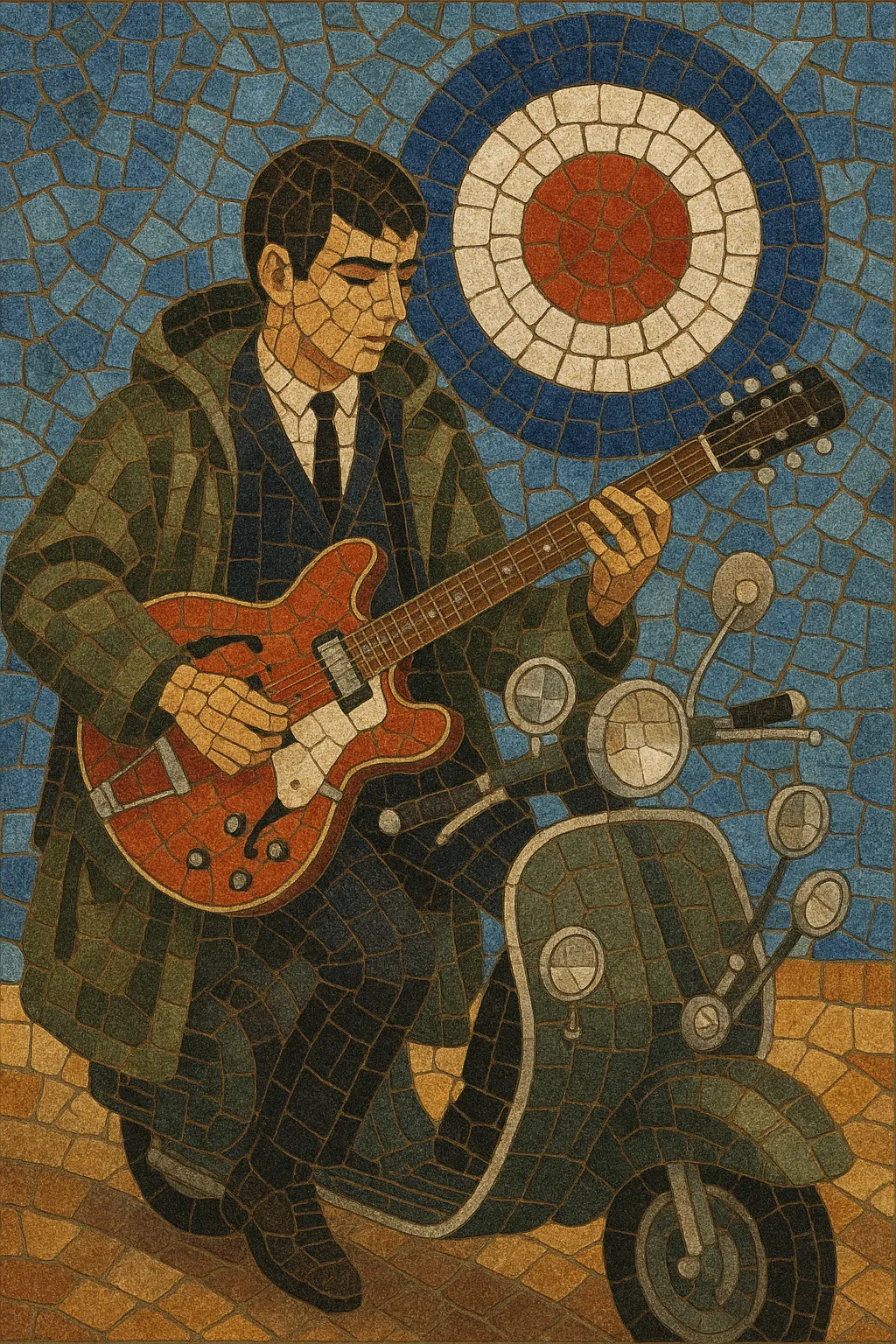
Mod revival is a late-1970s to early-1980s British movement that resurrected the sharp style, soul and rhythm & blues tastes, and youth-culture attitude of the 1960s mod scene, but delivered with the urgency of punk and the tuneful sheen of new wave.
Musically it blends brisk, guitar-driven power pop with British beat and R&B foundations: tight rhythm sections, crisp downstrokes, catchy two–three-minute songs, and anthemic choruses. Production tends to be clean and punchy—close-miked drums, chiming Rickenbacker guitars through Vox-style amps, occasional Hammond organ or brass stabs, and minimal effects.
The scene was inseparable from visuals and lifestyle: tailored suits, parkas, desert boots, scooters, fanzines, and club culture. The 1979 film Quadrophenia helped catalyze the movement’s mainstream moment, while bands like The Jam, Secret Affair, and The Chords brought it to the charts.
The mod revival emerged in the United Kingdom in the late 1970s as young fans rediscovered the sharp-dressed, soul- and R&B-loving 1960s mod culture. The energy of punk and the pop sensibility of new wave provided a contemporary spark. The Jam’s aesthetic and stance, along with key gigs and club nights, drew a new generation to scooters, suits, and 60s singles.
1979 was the tipping point: the film Quadrophenia reintroduced mod imagery to the mainstream, while fanzines and independent labels coordinated a fast-growing network of bands. Live documents like Mods Mayday ’79 captured the momentum. Secret Affair’s “Time for Action,” The Chords’ “Maybe Tomorrow,” The Lambrettas’ “Poison Ivy,” and Purple Hearts’ “Millions Like Us” became scene anthems, joining The Jam on UK charts. The sound coalesced around brisk beats, Rickenbacker chime, and tightly arranged, hook-forward songwriting.
Beyond music, the revival was a lifestyle: tailored suits and parkas, Vespa and Lambretta scooters, and crate-digging for Motown, Stax, and British beat records. Fanzines, scooter rallies, and specialist clubs sustained the culture, while indie labels and supportive radio spots helped bands reach national audiences.
Parallel scenes appeared in Europe, Japan, and parts of the U.S., and the UK’s 2 Tone ska revival often shared bills and audiences, even if its sound was distinct. Some mod revivalists folded more garage-psych or R&B grit into their approach, seeding the 1980s Medway/garage scenes.
By 1982 the initial wave ebbed as trends shifted and key bands split or evolved (Paul Weller’s move to The Style Council signaled a soul/jazz direction that would help prefigure acid jazz). The revival’s legacy, however, proved durable: its songwriting economy, guitar chime, and style consciousness fed into late-80s garage/Medway bands, early indie, and the 1990s Britpop surge.
Periodic resurgences, reissues, and festivals keep the sound and look alive, while newer bands revisit the formula—concise songs, crisp tones, and working-class storytelling—reminding listeners why the revival’s blend of speed, soul, and style continues to resonate.
Use a lean, guitar–bass–drums setup, often with a bright single-coil guitar (e.g., Rickenbacker) through a Vox/clean British amp. Keep tones crisp and present with light overdrive, minimal effects, and occasional tambourine. Add Hammond organ or brief horn stabs for soul/R&B color.
Stick to brisk 4/4 grooves (roughly 120–160 BPM). Drums should be tight and punchy: straight eighths on the hi-hat, solid backbeat on 2 and 4, and concise fills. Basslines are driving and melodically active, locking with the kick while outlining I–IV–V movement.
Write in major keys with diatonic progressions (I–IV–V, I–vi–IV–V) and occasional R&B turns (secondary dominants, add6/add9 voicings). Use ringing triads and power chords, quick modulations for bridges, and melodic vocal hooks. Keep songs concise (2–3 minutes), with strong pre-chorus lifts and gang or call-and-response backing vocals.
Focus on youth perspective and street-level narratives: nightlife, romance, class and work, friendship, identity, and urban scenes. Keep lines direct, memorable, and slogan-ready; aim for punchy choruses that feel anthemic.
Favor tight ensemble playing, minimal reverb, and clear separation. Double-track lead vocals sparingly, keep guitars up-front but not saturated, and ensure drums are dry and snappy. Use stop–start hits, unison accents, and short instrumental breaks to heighten live energy.

